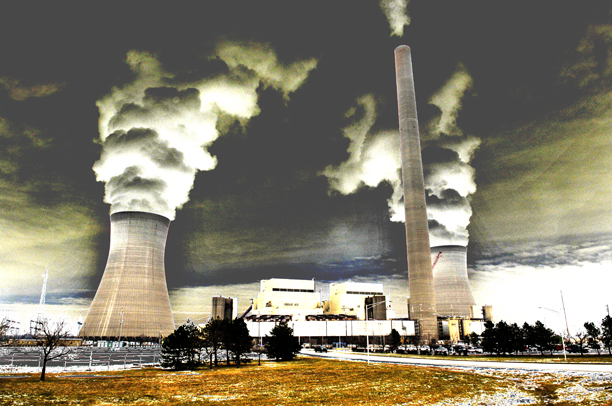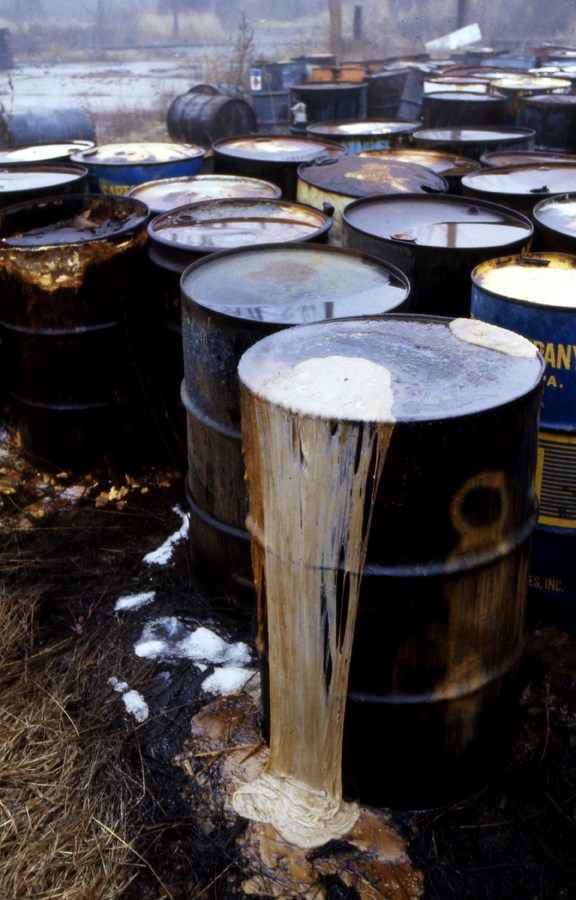November 7, 2017-By James Conca in Forbes Magazine

AEP’s Rockport plant, a 2,600 MW behemoth located in Rockport, IN will not have to install scrubbers until 2028 under an agreement signed by several environmental groups and the EPA in 2013 leaving us as a “sacrifice zone” for all intents. Photo © 2013 John Blair
The most comprehensive report to date on the health effects of environmental pollution shows that filthy air, contaminated water and other polluted parts of our environment kill more people worldwide each year than almost everything else combined – smoking, hunger, natural disasters, war, murder, AIDS, tuberculosis and malaria.
It’s no wonder then that the number of contaminated water-related deaths in Puerto Rico is expected to climb into the thousands.
In addition to the human tragedy, this pollution costs us well over $4 trillion in annual losses, or 6% of global GDP.
According to the study, 9 million people every year, one in every six premature deaths, are caused by diseases from toxic exposures in the environment. That’s 20 times more than all wars. Dr. Philip Landrigan, Dean of Global Health at the Icahn School of Medicine at Mount Sinai and the lead author of the report, noted, ‘There’s been a lot of study of pollution, but it’s never received the resources or level of attention as, say, AIDS or climate change’.
China knows this better than any other country. Over 300,000 people die each year from toxic emissions coming out of coal-fired power plants alone. And silica manufacturing and waste from computer chip and solar array manufacturing is a growing health problem.
In fact, poor countries in south Asia and in Africa sustain the majority of these pollution deaths. In many of these countries, especially India, pollution causes a fourth of all deaths, putting a huge burden on their developing economies. Even indoor burning of biomass in poor countries has become a global health epidemic.
But these same poor countries will never get out of poverty without increasing the very industries that cause this pollution – energy, manufacturing, mining, etc. Since it takes about 3,000 kWhs per person per year to have what we consider a good like – to get into the middle class – the only way to eradicate global poverty is to get these poor countries a lot more energy.
This concept is embodied in the United Nations Human Development Index, or HDI, that states the most important requirement for a good life is access to energy. HDI is the reason that China decided in 1992 to build about 600 coal-fired power plants, along with a lot of hydro and other energy sources. It lifted 500 million Chinese into the middle class. But it also ended up killing over 300,000 people a year and harming millions, leading to a huge unforeseen burden on their health care system.
China is trying to change their energy mix to get rid of dirty coal, but there remains about 800 million Chinese that still need over 2 trillion more kWhs per year to get them into the middle class as well. And 2 billion more people outside of China need another 6 trillion kWhs per year. And another 3 billion people will be born between now and 2040, requiring still another 9 trillion kWhs per year.
Since this is the only way to eradicate global poverty, any decision to not give them this energy is itself unethical. And to give them that much energy cleanly, along with cleaning up manufacturing and other industries to reduce pollution, will take even more energy.
This dependence of a good life on energy is not a secret. The 2015 COP21 climate meeting in Paris was mainly about how to give these people that much energy without giving them coal. Not only to save more lives, but to save the planet.
In fact, air pollution and climate change are closely linked and share common solutions. Fossil fuel combustion in higher-income countries and the burning of biomass in lower-income countries accounts for 85 percent of airborne particulate pollution. Reducing fossil fuel burning in higher-income countries and giving lower-income countries non-fossil and non-biomass energy sources is key to slowing global warming and cleaning up the environment.
And it will take all non-fossil sources, not just renewables. Along with millions of wind turbines and thousands of square miles of solar arrays, the Intergovernmental Panel on Climate Change, the International Energy Agency, the United Nations Sustainable Solutions Network and the Global Commission on the Economy and Climate all argue for a tripling of nuclear energy, requiring over a thousand new reactors, or many times that of small modulars, to stabilize carbon emissions.
According to all studies on the subject, coal kills over ten times more people than any other energy source per kWh produced, mainly from fine toxic particulates emitted from coal plants. And coal kills ten times more people in the developing world than in America, simply because they lack regulations like our Clean Air Act.
In fact, our Clean Air Act is the single piece of legislation that has saved the most American lives in history. It is why coal kills over 300,000 people in China each year, but only about 15,000 Americans per year. The two other significant life-saving pieces of legislation include Medicare in 1965 and the Fair Labor Standards Act of 1938, which established the 40 hour work week and reigned in child labor.
However, there are a lot more pollution health effects beyond actual death, and several studies have attempted to quantify those costs – costs that include lost work days, hospital visits, disability, prescription drugs and all the costs associated with illness in addition to death (1,2,3,4).
Eliminating the health effects of coal is the low-hanging fruit of pollution. A study by EPA’s Ben Machol and Sarah Rizk found that the use of coal in America costs us anywhere from $350 billion to $880 billion per year. That’s up to 6% of our GDP, and well over 10% of our total health care costs.
 In contrast, there are costs associated with coal itself – mining coal from the ground, transporting it across the country, producing electricity from it, and paying people to do all these things. Even though natural gas is replacing coal and our coal use is significantly down compared to ten years ago, we still consume over 700 million tons of coal a year, and we pay about $200 billion for that privilege.
In contrast, there are costs associated with coal itself – mining coal from the ground, transporting it across the country, producing electricity from it, and paying people to do all these things. Even though natural gas is replacing coal and our coal use is significantly down compared to ten years ago, we still consume over 700 million tons of coal a year, and we pay about $200 billion for that privilege.
What? We pay $200 billion to make and deliver the electricity from coal, and then we pay $300 to $800 billion trying to recover from it? This does not make economic sense.
So why not end coal, and use that money and lives saved to replace coal with gas, nuclear and renewables that do not impact health anywhere near as badly. The savings in health care alone would more than pay for it. It would even be cost-effective to pay the coal folks not to work, just like we’ve done for almost a hundred years for some farmers.
This thinking can be applied to a host of polluting issues, all with the idea that saving lives and health care costs would save enough money to prevent the pollution in the first place. Yes, it might require some type of tax but that would be offset by much lower health care costs.
And you can do quite a lot with $4 trillion every year. That’s equivalent to building, fueling and operating ninety 1,200-MW hydroelectric dams plus sixty 1,000-MW nuclear plants (or several hundred small modular reactors) plus 200,000 MW wind turbines plus three hundred solar arrays about the size of Ivanpah (600-MW) plus two hundred 500-MW natural gas plants, in total producing over 3 trillion kWhs per year split almost evenly among each energy source.
In only 15 years, we could replace all coal in the world, bring the global energy production up to well over 40 trillion kWhs per year – enough to eradicate global poverty – and still have enough money to reduce other global pollution to a fraction of what it is now. All with existing technologies.
Further technological breakthroughs and gains in efficiency will save even more money, save even more species, and raise the quality of life even higher for everyone in the world. Of course, the rate of building these plants required to accomplish this goal surpasses most build rates we’ve ever achieved, but it is doable with serious coordination among the nations of the world.
Unfortunately, it’s hard to convince people that money saved is the same as money earned. And no one likes the idea of a tax, even if it saves lives, property and the planet.
But we can do this faster than anyone thinks is possible, certainly before the last climate tipping points of 2040 – without destroying the planet and without bankrupting anyone.
We just need to do it.
